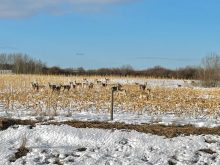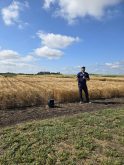University of Guelph biologists have tracked an annual migration of up to 20,000 kilometres made by the 12-gram blackpoll warbler, one of the fastest declining songbirds in North America.
The bird’s trek between its breeding grounds in the central and western boreal forest of North America and its winter home in the Amazon Basin is the topic of a new paper in the journal Ecology by a research team headed by University of Guelph biologist Ryan Norris.
Total southward migration took about 60 days on average over distances ranging from 6,900 km for birds breeding in Churchill, Man., to 10,700 km for populations in Nome, Alaska.
Read Also

Three paths of rengerative agriculture
From integrating livestock to grassland financial incentives to precision grazing, Canadian farmers are searching for practical paths to marry farm resilience with profit
Blackpolls from Nome took 18 days to fly across North America to the Atlantic coast of the Carolinas. There, the birds spent almost a month fattening up to double their body weight before a non-stop, 2-1/2-day flight across open water to overwintering grounds in northern Colombia, Venezuela and Brazil.
“It’s amazing,” said Norris, who worked on the study with Hilary Cooke, associate conservation scientist with Wildlife Conservation Society Canada. “A bird weighing a couple of loonies travels from the western edge of North America all the way to the Amazon Basin — and, in between, traverses the Atlantic Ocean.”
“As a conservation scientist, what strikes me most is that in a single year a blackpoll warbler has to navigate 20,000 kilometres across land and ocean, facing risks of cat predation, storms and collisions with buildings and vehicles, all while trying to find islands of habitat to rest and refuel in our human-dominated landscapes,” said Cooke.















